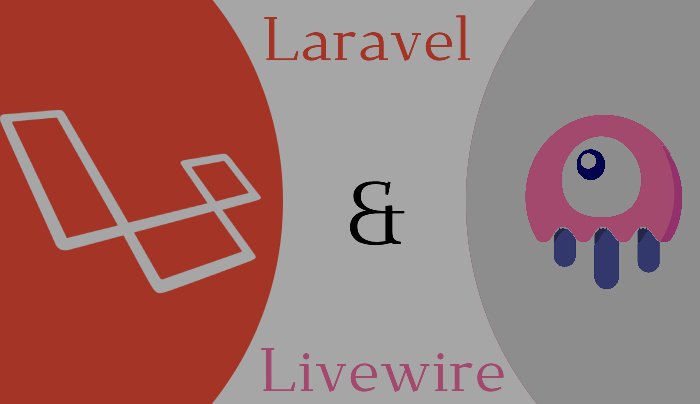Laravel + JWT: How to Build Secure Web Applications
Laravel is one of the most popular PHP web frameworks, well-known for its flexibility and robustness. The framework is widely used for building web applications of varying sizes and complexities. However, like every other web application, Laravel applications need security features to protect against unauthorized access and data breaches. One of the most popular authentication and authorization tools is JSON Web Tokens (JWTs). This article focuses on Laravel and JWTs, exploring how you can use these tools to create secure web applications.
What is Laravel?
Laravel is an open-source PHP framework that simplifies web application development. The framework is built on top of several components such as Blade Templating Engine, Eloquent ORM, and Artisan CLI. Laravel provides several features that developers can use to enhance the speed and quality of their applications, including routing, middleware, controllers, and migrations.
What is JSON Web Token (JWT)?
JSON Web Token (JWT) is a compact, stateless, and self-contained format used for securely transmitting information between parties. JWTs are commonly used for authentication and authorization purposes in web applications. The format consists of three parts: a header, a payload, and a signature. The header contains information about the type of token and the algorithm used to sign it. The payload contains claims, which are statements about the user and additional metadata. Claims can include user ID, email, and other data. The signature is a hash of the header, payload, and a secret key that is shared between the server and the client.
Why Use Laravel and JWT Together?
Laravel simplifies web application development, but it lacks built-in functionality for authentication and authorization. JWTs, on the other hand, are highly secure, stateless, and scalable. By combining Laravel with JWTs, developers can create a secure and efficient authentication and authorization system.
Benefits of Using Laravel and JWT
- Scalability: JWTs are scalable, meaning that they can be used in large-scale applications where multiple servers are involved. JWTs do not depend on server-side storage, making them a suitable alternative for microservices and distributed applications.
- Stateless: Since JWTs are stateless, the server does not need to keep track of the user's session state. This increases the performance and scalability of the application.
- Security: JWTs protect against unauthorized access and data breaches. The signature ensures that the token has not been tampered with, while the expiration time reduces the risk of long-term access to an application.
How to Use Laravel and JWTs
1. Install the Tymon JWTAuth Package
To implement JWT authentication in Laravel, you need to install the Tymon JWTAuth package. This package provides a JWT authentication guard and middleware to protect your routes. You can install the Tymon JWTAuth package using Composer. Open the terminal and navigate to your Laravel application folder. Run the following command:
composer require tymon/jwt-auth
2. Publish the Configuration File
Once you have installed the Tymon JWTAuth package, you need to publish the configuration file using the following command:
php artisan vendor:publish --provider="Tymon\JWTAuth\Providers\LaravelServiceProvider"
This will create a `config/jwt.php` file that contains the configuration options for JWT.
3. Generate Secret Key
To sign the JWTs, you need to generate a secret key. You can generate a key using the following command:
php artisan jwt:secret
This command will generate a secret key and update your `.env` file with the key.
4. Update User Model
To use JWT authentication, you need to update your User model to include `Tymon\JWTAuth\Contracts\JWTSubject` contract. This contract provides the methods required for encoding and decoding JWTs.
use Illuminate\Foundation\Auth\User as Authenticatable;
use Tymon\JWTAuth\Contracts\JWTSubject;
class User extends Authenticatable implements JWTSubject
{
//...
}
You also need to include the `getJWTIdentifier()` and `getJWTCustomClaims()` methods in your User model. The `getJWTIdentifier()` method returns the user ID, while the `getJWTCustomClaims()` method returns any additional claims you want to include in the payload.
public function getJWTIdentifier(){
return $this->getKey();
}
public function getJWTCustomClaims(){
return [];
}
5. Update Auth Guard
To use the JWT authentication guard, you need to update the `config/auth.php` file. Update the `guards` array to include the `api` guard, as shown below:
'guards' => [
//...
'api' => [
'driver' => 'jwt',
'provider' => 'users',
],
],
6. Protect Your Routes
Finally, you can protect your routes using the `auth:api` middleware. This middleware validates the JWT and authenticates the user before allowing access to the route.
Route::get('/user', function (Request $request) {
return $request->user();
})->middleware('auth:api');
Advanced features of Laravel and JWTs that can be used to enhance security include rate-limiting, role-based access control, and token revocation.
1. Rate-Limiting
Rate-limiting is a technique used to limit the number of requests a user or IP can make to an API within a specified timeframe. Rate-limiting helps to prevent brute-force attacks, DDoS attacks, and other malicious activities. Laravel provides rate-limiting middleware that developers can use to protect their APIs. The Tymon JWTAuth package also provides rate limiting, which you can configure in the `config/jwt.php` file.
2. Role-Based Access Control
Role-based access control (RBAC) is a security model that assigns roles to users based on their permissions and access rights. RBAC helps to ensure that users only access the parts of the application they are authorized to access. Laravel provides middleware that developers can use to implement RBAC in their applications. The Tymon JWTAuth package also provides RBAC features that developers can use to secure their APIs.
3. Token Revocation
Token revocation is the process of invalidating a JWT before its expiry time. Token revocation helps to protect against malicious actors who may have stolen or accessed a user's JWT. Laravel provides the `TokenBlacklist` middleware that developers can use to invalidate JWTs. The Tymon JWTAuth package also provides a `jwt:invalidate` command that developers can use to invalidate JWTs.
Conclusion
Laravel and JWTs provide an effective way of building scalable, stateless, and secure web applications. By combining Laravel's flexibility and JWT's security, you can build web applications that protect against unauthorized access and data breaches. The Tymon JWTAuth package provides a convenient way of implementing JWT authentication in Laravel, and you can easily modify the package to suit your application's needs. By leveraging advanced features such as rate-limiting, RBAC, and token revocation, developers can enhance the security of their applications and protect against malicious attacks.
Recent Posts
.jpg)

.jpg)
.jpg)
.jpg)
.jpg)

 (1).jpg)
.jpg)